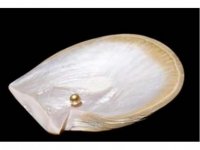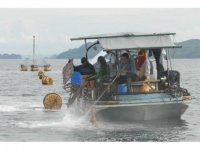Cyril Roger Brossard
Well-known member
- Joined
- Aug 30, 2012
- Messages
- 408
This is an old article most likely written as a blog after a farm visit, posted here for your perusal.
You can tell a lot about a man by his shoes. They can tell you about where he?s been, his personality, his economic status, his hobbies, his sense of style, and a host of other interesting facts that a regular Sherlock Holmes can deduce from a pair of shoes, and the footprints their wearer leaves.
One particular footprint, however, continues to be the hot topic today, such that everyone, from individuals to companies and entire nations, have been comparing ?shoe sizes?: the carbon footprint.

The carbon footprint is a measure of how much our lives impact the environment, particularly our effect on the growing problem of climate change. It relates to the amount of carbon dioxide one contributes to the atmosphere, primarily by consuming fossil fuel, through the vehicles we ride, the electricity we use, and even our diet. The proportions in this case are simple: the bigger your contribution of greenhouse gases, the larger your carbon footprint, and the greater your negative impact on climate change.
The growing interest in lessening one?s carbon footprint has also engaged industries in the pursuit of ?going green?-- that is, adapting practices that are considered earth-friendly, sustainable, and hopefully, also cost effective.
One such industry is South Sea pearl cultivation. A pearl farm is located in a remote area, with a clean water supply, the right salinity, and ideal water temperature, but most important, it is situated away from pollution so that the oyster remains healthy as it grows the South Sea pearl. The challenge for the pearl farmer is to maintain this pristine environment, or even improve on it, as he goes about his daily life.
Jewelmer, the leading producer of golden South Sea pearls in the Philippines, found the ideal site for their pearl farm in the province of Palawan, located in the southern portion of the Philippine archipelago. For more than three decades, the company has faced numerous challenges in successfully running their pearl farm in this location, engaging in what they call a ?non-extractive? process in order to cultivate their signature golden Palawan South Sea pearls.
?Pearl farming is bio-friendly, bio-active, and bio-regenerative,? says Jewelmer Managing Director Jacques Branellec. ?The pearl farm is a bio-generator because it protects an area, allowing biodensity and biodiversity to increase. The protected, cultivation zone is free from destructive methods of fishing and as per government regulation, contains a no-take zone where fish and marine life extraction is banned and allowed to breed and reproduce freely. It also gives shelter to multiple species, the density and variety of which increase noticeably.?
This phenomenon can be attributed to what is called the ?effect.? A or fish-attracting device works by taking advantage of fish behavior, which makes them gather close to floating solid objects and take shelter. Algae grows on a floating object or habong and attracts small fish to it. Meanwhile, small fish will attract larger fish, creating a localized food chain and food web. The pearl farm?s oyster lines, baskets, and bamboo rafts act as payao, since seaweed, algae, and other marine creatures attach to it and attract other marine organisms. They also serve as shelter for smaller marine micro and macroorganisms.
The effect has allowed for local fishermen from nearby islands to experience an increase of yield from three kilos of fish to 20 kilos daily, thanks to the unhindered growth of the marine population within the waters of the pearl farm concession.
Throughout a process that takes four to five years, with 323 individual steps to produce a single pearl, Jewelmer?s pearl farmers have adapted some practices to further minimize their carbon footprint.
To date, the Jewelmer farm is equipped with solar panels that have been used to harness solar energy as an alternative source of power. They are now used to power the farm?s freezers, lights, and pumps.

Coco diesel is another source of energy that is being explored by the pearl producer. Extracted from coconut oil, coco diesel is a renewable and biodegradable diesel that can be used in a diesel engine with little or no modification to the fuel system.
?At present, coco diesel is being used to power single engine pumps that clean oyster baskets,? says Branellec. ?We are currently researching on other ways that coco diesel can be used in the farm such as using it to power our generators.?
Furthermore, all the farm?s wastewater passes through a rapid sand filter, and is re-used in certain areas such as in the farm?s laboratory, to clean oysters prior to operation.
All the good intentions boil down to sparing no effort to nurture the golden Palawan South Sea pearl. ?The golden pearl is the key to a golden heart,? says Branellec. ?It?s a unifying principle of so many energies coming from nature and coming from man that also symbolizes the health of the planet. Every time we see a golden pearl, we see the promise of a clean environment that we want to work for as well as protect.?
Jul-27-2011 Maybe written by M. Didier BRODBECK
You can tell a lot about a man by his shoes. They can tell you about where he?s been, his personality, his economic status, his hobbies, his sense of style, and a host of other interesting facts that a regular Sherlock Holmes can deduce from a pair of shoes, and the footprints their wearer leaves.
One particular footprint, however, continues to be the hot topic today, such that everyone, from individuals to companies and entire nations, have been comparing ?shoe sizes?: the carbon footprint.

The carbon footprint is a measure of how much our lives impact the environment, particularly our effect on the growing problem of climate change. It relates to the amount of carbon dioxide one contributes to the atmosphere, primarily by consuming fossil fuel, through the vehicles we ride, the electricity we use, and even our diet. The proportions in this case are simple: the bigger your contribution of greenhouse gases, the larger your carbon footprint, and the greater your negative impact on climate change.
The growing interest in lessening one?s carbon footprint has also engaged industries in the pursuit of ?going green?-- that is, adapting practices that are considered earth-friendly, sustainable, and hopefully, also cost effective.
One such industry is South Sea pearl cultivation. A pearl farm is located in a remote area, with a clean water supply, the right salinity, and ideal water temperature, but most important, it is situated away from pollution so that the oyster remains healthy as it grows the South Sea pearl. The challenge for the pearl farmer is to maintain this pristine environment, or even improve on it, as he goes about his daily life.
Jewelmer, the leading producer of golden South Sea pearls in the Philippines, found the ideal site for their pearl farm in the province of Palawan, located in the southern portion of the Philippine archipelago. For more than three decades, the company has faced numerous challenges in successfully running their pearl farm in this location, engaging in what they call a ?non-extractive? process in order to cultivate their signature golden Palawan South Sea pearls.
?Pearl farming is bio-friendly, bio-active, and bio-regenerative,? says Jewelmer Managing Director Jacques Branellec. ?The pearl farm is a bio-generator because it protects an area, allowing biodensity and biodiversity to increase. The protected, cultivation zone is free from destructive methods of fishing and as per government regulation, contains a no-take zone where fish and marine life extraction is banned and allowed to breed and reproduce freely. It also gives shelter to multiple species, the density and variety of which increase noticeably.?
This phenomenon can be attributed to what is called the ?effect.? A or fish-attracting device works by taking advantage of fish behavior, which makes them gather close to floating solid objects and take shelter. Algae grows on a floating object or habong and attracts small fish to it. Meanwhile, small fish will attract larger fish, creating a localized food chain and food web. The pearl farm?s oyster lines, baskets, and bamboo rafts act as payao, since seaweed, algae, and other marine creatures attach to it and attract other marine organisms. They also serve as shelter for smaller marine micro and macroorganisms.
The effect has allowed for local fishermen from nearby islands to experience an increase of yield from three kilos of fish to 20 kilos daily, thanks to the unhindered growth of the marine population within the waters of the pearl farm concession.
Throughout a process that takes four to five years, with 323 individual steps to produce a single pearl, Jewelmer?s pearl farmers have adapted some practices to further minimize their carbon footprint.
To date, the Jewelmer farm is equipped with solar panels that have been used to harness solar energy as an alternative source of power. They are now used to power the farm?s freezers, lights, and pumps.

Coco diesel is another source of energy that is being explored by the pearl producer. Extracted from coconut oil, coco diesel is a renewable and biodegradable diesel that can be used in a diesel engine with little or no modification to the fuel system.
?At present, coco diesel is being used to power single engine pumps that clean oyster baskets,? says Branellec. ?We are currently researching on other ways that coco diesel can be used in the farm such as using it to power our generators.?
Furthermore, all the farm?s wastewater passes through a rapid sand filter, and is re-used in certain areas such as in the farm?s laboratory, to clean oysters prior to operation.
All the good intentions boil down to sparing no effort to nurture the golden Palawan South Sea pearl. ?The golden pearl is the key to a golden heart,? says Branellec. ?It?s a unifying principle of so many energies coming from nature and coming from man that also symbolizes the health of the planet. Every time we see a golden pearl, we see the promise of a clean environment that we want to work for as well as protect.?
Jul-27-2011 Maybe written by M. Didier BRODBECK
